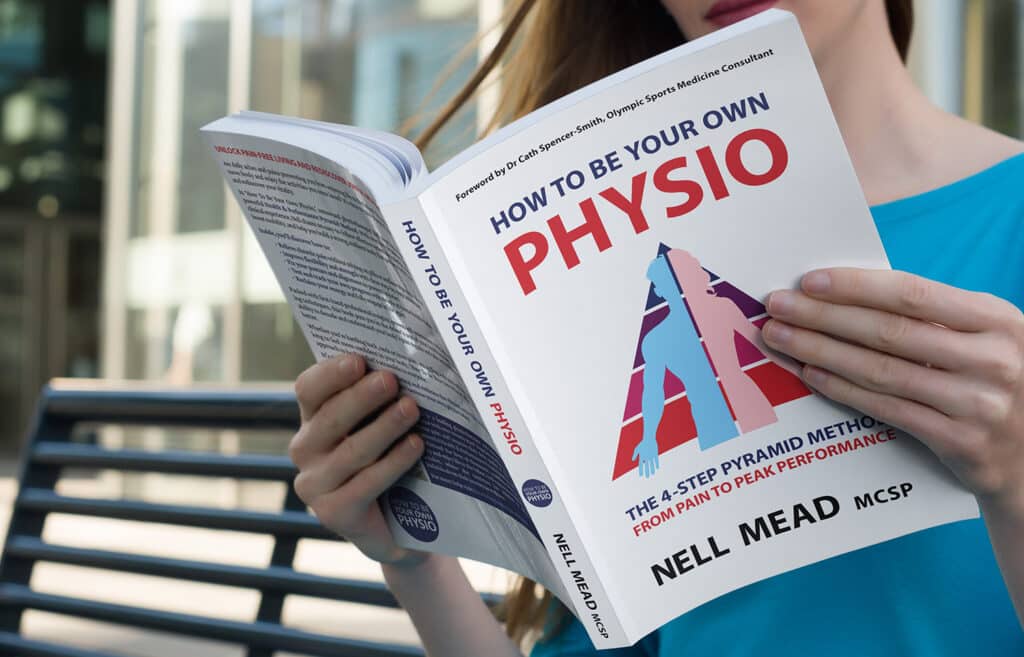Physio for Plantar Fasciitis
In my clinic, I don’t just treat your symptoms – I analyse your whole body to find the cause.
I saw a new patient last month, let’s call her Jennifer. Jennifer had pain in the arch of her right foot and under her heel. She told me that her pain was worse in the mornings when she woke up, and that for a good 15 minutes after getting out of bed, she couldn’t get her heel down onto the ground. This is a really common symptom of a common condition called plantar fasciitis, or inflammation of the tissue under the sole of the foot. But what is plantar fasciitis treatment and how do we go about it? (Spoiler: if you come to see me for plantar fasciitis physiotherapy, I’ll be looking at more than just your feet!)
A bit of anatomy
Each foot and ankle contains:
- 26 bones (given that an adult has 206 bones, this means that over ¼ of them are in the feet!)
- 33 joints
- more than 100 muscles, tendons and ligaments (including the plantar fascia)
- a network of blood vessels, nerves, skin, and soft tissue.
These components work together to provide the body with support, balance, shock absorption and mobility; and when your plantar fascia (the tissue that attaches the bottom of your heel bone or calcaneus to the “knuckles” of your toes) is tight and sore, your foot certainly won’t be working normally! Plantar fasciitis is a fairly common problem: it affects around 10% of runners, and accounts for around 1% of all visits to orthopaedic surgeons! However, there is no real consensus on the best treatment. Around 90% of patients do get better with conservative (non-surgical) treatment, but the research suggests that it can take up to a year for this to happen.
Standard physiotherapy ways to treat plantar fasciitis include:
- Ice
- Stretching of the plantar fascia or calf muscles
- Rest
- Insoles to correct the foot biomechanics
- Insoles to provide shock absorption
- Anti-inflammatory medication such as ibuprofen
- Night splints to stretch the plantar fascia and calf while you sleep
- Strengthening exercises for the calf and foot muscles
If that doesn’t work, the next standard step is to escalate from physiotherapy to a more invasive treatment such as: • Shock wave therapy • Steroid injection • Surgery – either to “release” the plantar fascia, or to shave a bit off the calcaneus
These treatments may well be right for you, and they are certainly effective for many people. However, they all make the assumption that the problem is originating from your calf or foot – and I don’t like assumptions (I especially don’t want anyone sticking a knife into my foot based on an assumption!)
In Jennifer’s case, she’d been wearing insoles, and icing and stretching her foot for four months before she came to see me, but her foot didn’t seem to be getting any better. Her physio and her consultant had been talking about escalating her treatment to shock wave therapy or an injection, but she wasn’t keen on that idea and wanted another opinion before going down that route.
What’s the difference, when you come to see Nell Mead for plantar fasciitis physiotherapy?
As I’ve discussed with my blog posts on
Diane Lee’s Integrated Systems Model,
everything is connected. A structural flaw or malfunction in
any region of the body can result in the development of problems elsewhere in the body. If you have plantar fasciitis, it’s perfectly possible that your foot could be the issue, if the foot problem is the underlying issue which is “driving” the foot pain. But it’s equally possible that an issue in another area of the body can lead to pain or problems in the feet.
So what I did for Jennifer was to look at her
whole body, to work out why her right foot was hurting. Her plantar fascia was irritated enough that she could feel the pain every time she shifted her weight onto her right foot.
I did a
posture screen and found that there were a few issues in Jennifer’s system when she was standing on both feet: her pelvis was rotated to the left, and her right hip was internally rotated. These issues were worse when she shifted her weight to the right, and she lost control of the arch of her right foot.
As part of the assessment process, I corrected each impaired region in turn (pelvis, hip and foot) while Jennifer shifted her weight onto her right foot.
We discovered that Jennifer could maintain good and pain-free control of her foot and her pelvis when I corrected her hip position – and it quickly turned out that Jennifer had a muscle imbalance around her hip, which was causing her to lose control of her foot, yanking on her plantar fascia at each step and irritating it. When I treated her hip and prescribed exercises for her glutes and pelvic floor, Jennifer was able to regain control of her foot, and
her plantar fasciitis resolved within a few weeks.
Is your plantar fasciitis treatment working poorly or slowly despite having treatment on your foot? If so, it’s possible that your problem is originating from somewhere other than your foot – and if that’s the case, we’d love to help! Just call my team today on 0207 175 0150 to book an appointment, email help@nellmead.com, or complete the form on the right side of this page and come in for an assessment.







